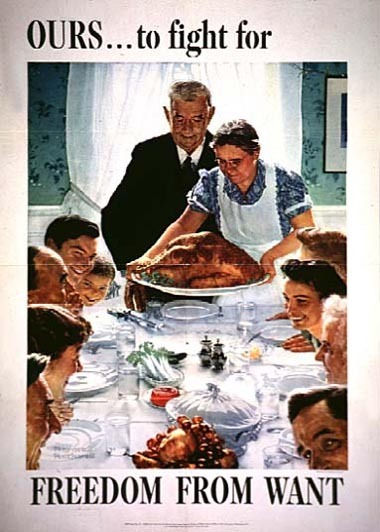Celebrating Thanksgiving in Greenbelt
- Sheila Maffay-Tuthill and Megan Searing Young
- Nov 25, 2020
- 3 min read
Updated: Nov 27, 2025

Please note: We at the Greenbelt Museum recognize the complicated legacy of the Thanksgiving holiday as it relates to Indigenous peoples (more on that below), and we intend this piece to both celebrate Greenbelt history and to promote an expanded and more equitable understanding of the history of the holiday.
The very first Thanksgiving in Greenbelt was soon after the earliest residents had moved in. The cooperative grocery store wasn’t opened yet, the newspaper had just released its very first edition and about 170 families were in Greenbelt. The town hosted a Thanksgiving dance featuring Greenbelt’s “foremost maestro” Johnny Graham and his Orchestra! A Turkey raffle was held that month, to buy green and white basketball uniforms for the school team. Many early Greenbelters were sitting down to the family feast at a dining set specially designed for the homes here. The bird on the table may well have been a Beltsville Small White turkey, developed at our northern neighbor, the Beltsville Agricultural Research Center. This turkey was developed as a smaller alternative to traditionally bred turkeys. According to the BARC website, "By the late 1940s, the Beltsville Small White turkey, which averaged 8 to 10 pounds with a high percentage of breast meat, began showing up in stores. Today, this turkey line is part of the pedigree of nearly every turkey sold in the United States."
Sadly, Greenbelt was open only to white families and would remain all white until the mid-1960s. However. as a part of the design of Greenbelt, people of many different faiths were selected by the planners. That had a large effect on the community, and by 1951 the religious faiths in Greenbelt were hosting an interfaith, ecumenical Thanksgiving service each year. This continues today, with the organizations taking turns hosting, with an interfaith choral group singing a collection of songs.
The Greenbelt Cooperator sponsored an essay contest in 1950 for city school children to write about Thanksgiving and its significance. First prize winner Judy Loftus, at the time in fifth grade at St. Hugh’s School, finished her essay with words of thanks for the freedoms available in the United States of America (likely inspired by Roosevelt's Four Freedoms from 1941 and then painted by Norman Rockwell), especially freedom to vote, freedom of the press, freedom of speech, freedom to worship. Judy won $5.00 for her essay!

Many of us have so many happy memories of home, food, and family around the Thanksgiving holiday. But as stated at the beginning of this blog post, we'd be remiss as historians if we didn't also call attention to the fact that for many the holiday is not a happy one at all.
Long before Greenbelt was built on the land in what is now called Prince George's County, it was occupied by indigenous peoples---Native Americans, likely the Piscataway. As historians learn more about what really happened in New England between the Indigenous people there, the Wampanoag, and the European settlers who arrived on their land, it's clear that the story of Thanksgiving that many of us grew up with paints far too rosy a picture. Did you know that many of the ways we celebrate today are based not on a meal that took place in the 17th century but on a holiday enshrined in the middle of the 19th century? See images below, some are clickable, for ways Thanksgiving has been and continues to be imagined in the 20th and now the 21st centuries. (The meal continues to evolve and recipes from all different cultures and for vegetarian and vegan dishes are more and more common.) For many Native Americans, Thanksgiving is known as a national day of mourning, not at all a day to celebrate or give thanks. Native Americans are certainly not a monolithic group, however, and different groups and individuals feel differently about the holiday. To learn more, please explore the links below. The Thanksgiving holiday is also not a happy one for so many who struggle with food and/or housing insecurity. If it's within your budget, please give to your local food bank or nonprofit working on behalf of the homeless.
In this difficult year, we at the Greenbelt Museum wish a safe, healthy, and happy Thanksgiving to everyone!
The National Museum of the American Indian Thanksgiving Resources































Boost your online success with The Capcon’s proven techniques for digital marketing in Pakistan.
Island Luxury Apartments in Dubai offer an exclusive lifestyle surrounded by stunning waterfront views, modern architecture, and world-class amenities. Perfectly blending comfort and elegance, these residences provide private beach access, premium facilities, and serene living. Ideal for investors and residents seeking sophistication, privacy, and luxury in Dubai’s iconic island communities.
Step aboard a super yacht Dubai experience with Supernova Yachts—perfect for elite celebrations, film shoots, or luxury getaways. Our mega yachts redefine opulence with jacuzzis, lounges, chefs, and crew. Discover Dubai’s coastline like royalty.
I love discovering rahasyamayi kahaniyan real story because they show how thrilling real-life mysteries can be. Each story gives a sense of excitement and curiosity that’s hard to forget.
One of the smartest moves by the UP scholarship online is making the scholarship process online. It’s fast, convenient, and transparent. Students can easily log in, fill out forms, and track their progress without leaving home. The best part is that all updates are provided online, so students don’t miss important deadlines. I think this digital approach has made the scheme more reliable. Every eligible student should take advantage of the online process.